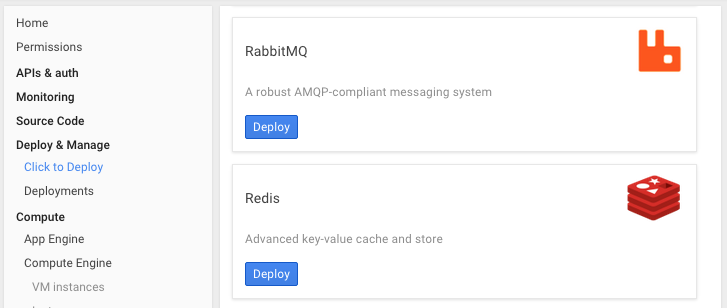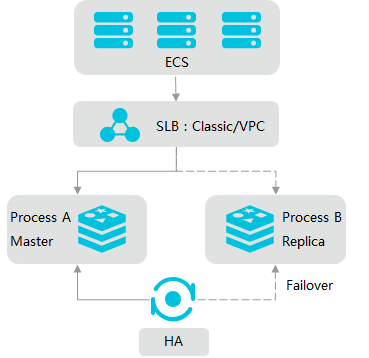Redis Sentinel Reset
Before start
- redis excutable commands are under
binfolder, configs are underetcfolder, logs are undervarfolder

Redis master
Configuration
SENTINEL RESET mastername command: they'll refresh the list of replicas within the next 10 seconds, only adding the ones listed as correctly replicating from the current master INFO output.
Redis-server -service-install sentinel.windows.conf -loglevel verbose -service-name Sentinel -sentinel Note: By default, the Redis server runs on TCP Port 6379. If using in a non-secure network then the port should be blocked from external access but be accessible from all other sentinels and all Redis servers. # Host and port we will listen for requests on bind 127.0.0.1 port 16380 # # 'redis-cluster' is the name of our cluster # # each sentinel process is paired with a redis-server process # sentinel monitor redis-cluster 127.0.0.1 6380 2 sentinel down-after-milliseconds redis-cluster 5000 sentinel parallel-syncs redis-cluster 1 sentinel failover. Reset a Redis Cluster node, in a more or less drastic way depending on the reset type, that can be hard or soft. Note that this command does not work for masters if they hold one or more keys, in that case to completely reset a master node keys must be removed first, e.g. By using FLUSHALL first, and then CLUSTER RESET. Effects on the node.
Start Master
Verify Master
You should see something like this, if you have slave you will see number of connected_slaves :
Redis slave
Configuration
Repeat master configuration, change your port, bind ip…etc, the only difference are two lines :
Start Slave

Verify Slave
You will see something like this :
Sentinel
Create sentinel.conf
Start sentinel
Verify sentinel
Useful commands
A little note for yaml format
- Normally you don’t need quote for string,
- If string contains special character, use quote
'or' - Difference between
'or'is double quote parse escape character but single quote doesn’t
Cheatsheet
Introduction
Redis is an open-source, in-memory key-value data store. Whether you’ve installed Redis locally or you’re working with a remote instance, you need to connect to it in order to perform most operations. In this tutorial we will go over how to connect to Redis from the command line, how to authenticate and test your connection, as well as how to close a Redis connection.
How To Use This Guide
This guide is written as a cheat sheet with self-contained examples. We encourage you to jump to any section that is relevant to the task you’re trying to complete.
Redis Sentinel Reset Command
The commands shown in this guide were tested on an Ubuntu 18.04 server running Redis version 4.0.9. To set up a similar environment, you can follow Step 1 of our guide on How To Install and Secure Redis on Ubuntu 18.04. We will demonstrate how these commands behave by running them with redis-cli, the Redis command line interface. Note that if you’re using a different Redis interface — Redli, for example — the exact output of certain commands may differ.
Alternatively, you could provision a managed Redis database instance to test these commands, but note that depending on the level of control allowed by your database provider, some commands in this guide may not work as described. To provision a DigitalOcean Managed Database, follow our Managed Databases product documentation. Then, you must eitherinstall Redliorset up a TLS tunnel in order to connect to the Managed Database over TLS.
Connecting to Redis

If you have redis-serverinstalled locally, you can connect to the Redis instance with the redis-cli command:
This will take you into redis-cli’s interactive mode which presents you with a read-eval-print loop (REPL) where you can run Redis’s built-in commands and receive replies.
Redis Sentinel Commands
In interactive mode, your command line prompt will change to reflect your connection. In this example and others throughout this guide, the prompt indicates a connection to a Redis instance hosted locally (127.0.0.1) and accessed over Redis’s default port (6379):
The alternative to running Redis commands in interactive mode is to run them as arguments to the redis-cli command, like so:
If you want to connect to a remote Redis datastore, you can specify its host and port numbers with the -h and -p flags, respectively. Also, if you’ve configured your Redis database to require a password, you can include the -a flag followed by your password in order to authenticate:
If you’ve set a Redis password, clients will be able to connect to Redis even if they don’t include the -a flag in their redis-cli command. However, they won’t be able to add, change, or query data until they authenticate. To authenticate after connecting, use the auth command followed by the password:
If the password passed to auth is valid, the command will return OK. Otherwise, it will return an error.
If you’re working with a managed Redis database, your cloud provider may give you a URI that begins with redis:// or rediss:// which you can use to access your datastore. If the connection string begins with redis://, you can include it as an argument to redis-cli to connect.
However, if you have a connection string that begins with rediss://, that means your managed database requires connections over TLS/SSL. redis-cli does not support TLS connections, so you’ll need to use a different tool that supports the rediss protocol in order to connect with the URI. For DigitalOcean Managed Databases, which require connections to be made over TLS, we recommend using Redli to access the Redis instance.
Use the following syntax to connect to a database with Redli. Note that this example includes the --tls option, which specifies that the connection should be made over TLS, and the -u flag, which declares that the following argument will be a connection URI:
If you’ve attempted to connect to an unavailable instance, redis-cli will go into disconnected mode. The prompt will reflect this:
Redis will attempt to reestablish the connection every time you run a command when it’s in a disconnected state.
Testing Connections
The ping command is useful for testing whether the connection to a database is alive. Note that this is a Redis-specific command and is different from the ping networking utility. However, the two share a similar function in that they’re both used to check a connection between two machines.
If the connection is up and no arguments are included, the ping command will return PONG:
If you provide an argument to the ping command, it will return that argument instead of PONG if the connection is successful:

If you run ping or any other command in disconnected mode, you will see an output like this:
Note that ping is also used by Redis internally to measure latency.
Disconnecting from Redis
To disconnect from a Redis instance, use the quit command:
Running exit will also exit the connection:
Both quit and exit will close the connection, but only as soon as all pending replies have been written to clients.
Conclusion
This guide details a number of commands used to establish, test, and close connections to a Redis server. If there are other related commands, arguments, or procedures you’d like to see in this guide, please ask or make suggestions in the comments below.
For more information on Redis commands, see our tutorial series on How to Manage a Redis Database.